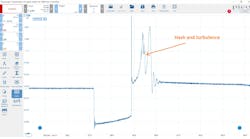Content brought to you by PTEN. To subscribe, click here.
I’m sure it’ll come as no surprise when I say the automotive industry is changing. Actually, it’s been changing for quite some time. However, according to Steve Greenfield, founder and CEO of Automotive Ventures, “The automotive industry is going to see more change in the next 10 years than it’s experienced in the past 100.”
Greenfield was the day one keynote speaker at this year’s ETI (Equipment & Tool Institute) ToolTech conference. His presentation, along with many others, discussed some of the changes we can expect to see in the coming years.
1. Electric vehicles are coming
Over the past few years, we’ve seen many statements from vehicle manufacturers saying that by 2035 or so, they’ll have a fully electric vehicle line-up. With all these new EV offerings on the way, Greenfield notes that EVs will overtake internal combustion engine (ICE) vehicles in less than 10 years. He cites a study done by S&P Global Mobility that predicts by 2027 EVs will overtake hybrid vehicles, by 2029 EVs will overtake ICE vehicles, and by 2032 EVs will overtake both hybrid and ICE vehicles.
More interesting though, was Greenfield discussing how EVs are less complex and need less maintenance than an ICE vehicle. With more EVs on the road, there may actually be fewer vehicles in the shops. Software updates will handle many vehicle “repairs” without the need for a technician to even touch the vehicle.
2. The impact of AI
AI has become an increasingly large part of all our everyday lives. Whether it’s asking Siri to set a timer or having Google schedule a reminder to pick up eggs after work, AI has become a set of invisible helping hands making our lives just that much easier. But what impact does AI have in the automotive industry? More than you’d think if utilized in the right way.
Mark Seng, vice president of business development for Predii, discussed how AI can be used to “unlock your historical data.” This means that when a vehicle comes into your shop, AI can look up records from similar vehicles with similar issues to give you an idea of what parts may need to be ordered or how to fix the vehicle based on past repairs. No person can remember everything, but with AI you won’t have to.
3. Challenges in today’s shops
The technician shortage is, unfortunately, nothing new, however, it remains one of the biggest challenges plaguing today’s shops. Mike Allen, owner of Carfix Auto Repair & Tires, Raleigh North Carolina, had an interesting take on the root of the tech shortage, saying that the skilled labor shortage was created by the auto industry itself through not paying well enough or providing benefits. Future technicians are being lost to other industries, not other shops.
To counteract this issue and bring new workers into his shop, John Firm, owner of Firm Automotive in Fort Worth, Texas, notes he gets creative with pay and benefits, tries to stay connected with peers in the industry, and works with a business coach to stay up-to-date with industry trends.


